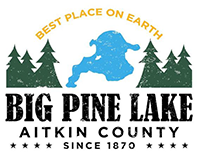Invasive Species Information
Aquatic Invasive Map from MNDNR
http://www.eddmaps.org/midwest/tools/infestedwaters/
Eurasion Milfoil
https://www.dnr.state.mn.us/invasives/aquaticplants/milfoil/index.html
Zebra Mussels
https://www.dnr.state.mn.us/invasives/aquaticanimals/zebramussel/index/html
Spiny Water Flea (Currently in Mille Lacs)
https://www.dnr.state.mn.us/invasives/aquaticanimals/spinywaterflea/index.html
Chinese Mystery Snail (Currently in Mille Lacs) https://www.dnr.state.mn.us/invasives/aquaticanimals/chinese-mystery-snail/index.html
Starry stonewart video from Lake Koronis
https://www.youtube.com/watch?v=Wvw3OCgyq2A
Zebra Mussels In Big Pine Lake
MNDNR Zebra Mussels Information PDF
Invasive Species in Aitkin County
The Aitkin County Soil and Water Commission Conservation District monitors Aquatic Invasive Species (AIS) in our county. Currently, Big Pine Lake has Zebra Mussels. Our association attends AIS meetings on a monthly basis. There are some experimental trials looking at options for eradication of Zebra Mussels and the Association will continue to review the newest treatment options for consideration that minimizes damage to the lakes ecology. One of the invasive species to watch for is the Spiny Water Flea which attaches to fishing lines (looks lie cotton). They have been detected in Mille Lacs, so we fear transportation to our lake. The following Links provide additional information.
Aitkin County Soil and Water Conservation District
MNDNR Local Aquatic Invasive Species Prevention Information
Rum River Watershed Information
Through our many connections, we are part of the Rum River Watershed Management Program, which includes Big Pine Lake and the Mille Lacs Lake. With regard to invasive species and the prevention of existing infestations the plan has two goals. The goals:
- “Aquatic habitats are threatened by increased frequency and volume of precipitation, increasing pollutant loads, excess sediment, degraded shoreline, and barriers to fish passage. Degraded aquatic habitats should be restored and high-quality habitats protected, especially when water quality benefits can also be achieved.” Reduction of acres and population size of current invasive species. Recommendation developed for cooperative weed management for reduction of new infestations of invasive species”.
- “Reduce new infestations of invasive species…Early detection and rapid response plans for new terrestrial and aquatic invasive species are developed for each county and compared to increase coordination”.

